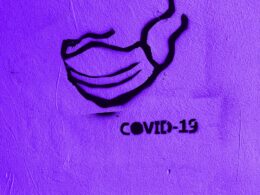Our culture is in the midst of an archival revival. Across industries people are grappling with ways to make use of the archive to feel current, cool, and push creativity forward. The logical evolution of our ongoing preoccupation with nostalgia, this interest in the archive as a source of aesthetic material and a site of cultural discourse is emerging across creative industries.
By Douglas Schowengerdt
Audiences have begun to see the value of preservation, evidenced by the uproar of Discovery+ removing shows from its streaming services; and the value of paying homage to the greats who’ve paved the way, such as the excitement surrounding samples like Robin S’s Show Me Love and Moi Renee’s Miss Honey in Beyoncé’s Renaissance. Amidst growing consumer interest, brands are seeking to create their own archives, like Pokémon, which recently advertised a job for an in-house archivist. From albums and fashion campaigns, to social media pages and editorial projects, we’ve decided to take a closer look at our culture’s turn to the archive.
The Social Media Solution
Social media has offered a solution to a longstanding issue with archives – preserving the nuance, ephemera, and complexities of culture in real time. Creators have verified records of their work, but with the explosion of documentation, the archive, with its ability to impose order on otherwise incomprehensible amounts of information, becomes all the more vital. These curatorial archival practices inevitably lead to questions such as: Who and what deserves a place in the historical record? Who receives credit for creative products, and to what degree is an archive a reliable source of historical truth?
The Archive AS Fashion’s Inspiration
Fashion is an industry where creating, referencing, and pulling from archives is common practice. The archive has always served as inspiration for designers, establishing an aesthetic lineage across generations at fashion houses. Archival fashion has been a defining trend of the last year, with some brands reissuing iconic styles, showing that the archive can influence new products. There is genuine creative power to the archive that can bring heritage brands new popularity with younger audiences.
The archive can serve not only as creative inspiration, but also as an indication of the direction a company is heading in. Earlier this year, Ralph Lauren announced a collection in collaboration with Morehouse and Spelman Colleges, two Black colleges in Atlanta. The collection and campaign imagery were inspired by archival photographs from the colleges, with the campaign featuring models scouted from the universities’ staff and students. This project shows how archival material can reposition a brand identity and produce innovative, partnerships.
The Power of Music is Undisputed
Like fashion, music is well-known to draw upon the creativity of the past to create an intricately entangled, highly-referential history. Sampling is one of the most significant aspects of modern music, such as in the development of hip-hop and house music. No album in recent memory pays homage to this phenomenon more clearly than Beyonce’s Renaissance.
In one of the most highly anticipated albums of the year, Beyoncé helps correct the whitewashing of history by making accessible and widely-discussed the Black roots of house music. She is reminding us where dance music comes from, reclaiming house music as an intrinsically Black, queer art form. Through Renaissance, we see the possibilities for how an archive can actively engage pop culture, embodying emerging and established ideas of the source materials while ensuring that those who did the work get credited in the historical record.
The Evolution of Marketing
Turning to the archive is a logical evolution in the world of marketing. Nostalgia became advertising’s most valuable commodity, dominating visual styles and influencing brand strategy across the board. The “museumification” trend a few years ago personified this early interest in viewing history and pop culture as intertwined. Thus, pulling from the archive can establish a brand’s legacy and its cultural context, demonstrate a brand’s long-term vision of itself, and stir creative inspiration that can help frame its past and its present. We’re interested to see how the events sphere can begin to incorporate this practice, creating and curating an archive of experience that gives a historical significance to how we get together.
New Moon
 Douglas is a Berlin-based cultural correspondent for the brand strategy consultancy New Moon, with specific expertise in the realms of fashion, fine art, nightlife, and house music. They earned their bachelor’s degree from UC Berkeley, graduating with honors in American Studies and Art History. They are currently earning a master’s degree in American Studies from Humboldt-Universität zu Berlin.
Douglas is a Berlin-based cultural correspondent for the brand strategy consultancy New Moon, with specific expertise in the realms of fashion, fine art, nightlife, and house music. They earned their bachelor’s degree from UC Berkeley, graduating with honors in American Studies and Art History. They are currently earning a master’s degree in American Studies from Humboldt-Universität zu Berlin.
Photo by Sara Cohen on Unsplash.












